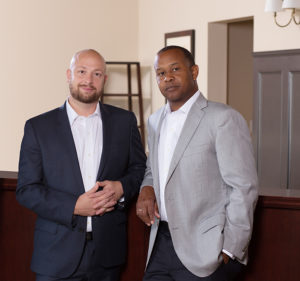 Roof damage claims are very common in the insurance industry. Roof damage can be caused by windstorms, like hurricanes and tornadoes, hail, sinkholes, fire, explosions, and collapse. Roof damage is often times only part of the damage caused to property. Every roof damage claim comes along with a unique set of circumstances. Before filing roof damage claims, a list of the unique circumstances must be made.
Roof damage claims are very common in the insurance industry. Roof damage can be caused by windstorms, like hurricanes and tornadoes, hail, sinkholes, fire, explosions, and collapse. Roof damage is often times only part of the damage caused to property. Every roof damage claim comes along with a unique set of circumstances. Before filing roof damage claims, a list of the unique circumstances must be made.
There is also the consideration of whether or not to file a claim. Before filing a claim, the home owner should review their insurance policy to help understand what can and cannot be covered. It could be a good idea to have the roof examined by a professional. If an estimated repair is not more than the deductible it could be a good idea to notify the insurance company.
Roof Damage Claims and CLUE
When a roof damage claim is made, there is a possibility that the report could be filed as part of the Comprehensive Loss Underwriting Exchange (CLUE). A CLUE report maintains the home owner’s insurance score and this influences future prospects of the home owner. Even if roof damage claims are not handled by the insurance company, reports of any problems could still affect a person’s CLUE report rating down the line.
Roof Damage Claim Circumstances
First, a home owner must provide evidence of the circumstances that caused the roof damage. Insurance companies like to know the age and condition of the roof beforehand. Also, what type of roofing system is involved, such as asphalt shingle, ceramic, metal tile, sheet metal or built-up flat roof. Any maintenance records should also be provided and building codes should be considered.
The obvious circumstances of a roof damage claim are uplifted roof membrane, broken or missing shingles, gouge marks from debris, scouring of shingles, and broken or missing roof shingles. A breach in a building’s envelop can cause an increase in internal pressure that can lead to uplift or compromise of a wall system.
There are also other signs for roof damage claims that are not as obvious. Sometimes damaged rooftops do not show obvious signs of damage. This could be misleading if there is a leak in the home with no exterior signs of damage. When this is the case, the roof may be damaged from the interior.
It is possible for the underside of the roof membrane to be damaged by torqueing from an A/C unit which can cause leaking. Separated or uplifted nails between the roof trusses or sheathing from uplifting wind pressure are other difficult problems to notice. Difficult cases like this often lead to disagreements with insurance adjusters when filing roof damage claims.
Reparation after Roof Damage Claims
To help determine the problem with a roof, a sample of the roof can be cut off with the home owner’s permission. Most insurance companies do not cover pre-existing conditions of the roof. In some cases, differentiating new problems from old problems would be helpful with the help of a public adjuster. Public adjusters can also help to settle roof damage claims where an insurance company is reluctant to pay for the damages in full.
The residents of a home with a damaged roof may need to be relocated by the insurance company if the home is seen as a potential hazard. Home insurance companies will often cover the fees involved in relocation until the home is repaired.
Roof Damage Attorneys
After a home insurance company decides to cover the cost for a roof damage claim, a contractor will need to be called in order to repair any damages. The roof damage claim will cover the cost in many cases. In cases where there is only partial coverage, the roof damage claim will cover about 30 to 40 percent of the full fee from the contractors. After the repairs are completed by the contractors, it will be safe for the residents of the home to return.
Sources:
“Does My Insurance Policy Cover Roof Damage?.”Homesite Home Insurance. N.p.. Web. 11 Sep 2013. <http://www.homesite.com/insurance-resources/home-insurance-articles/insurance-policy-cover-roof-damage.htm>.
“Roof Damage Claims Adjusters.” Tutwiler Public Adjuster. N.p.. Web. 11 Sep 2013. <http://www.publicadjuster.com/type-of-claim/roof-damage.asp&xgt;.
